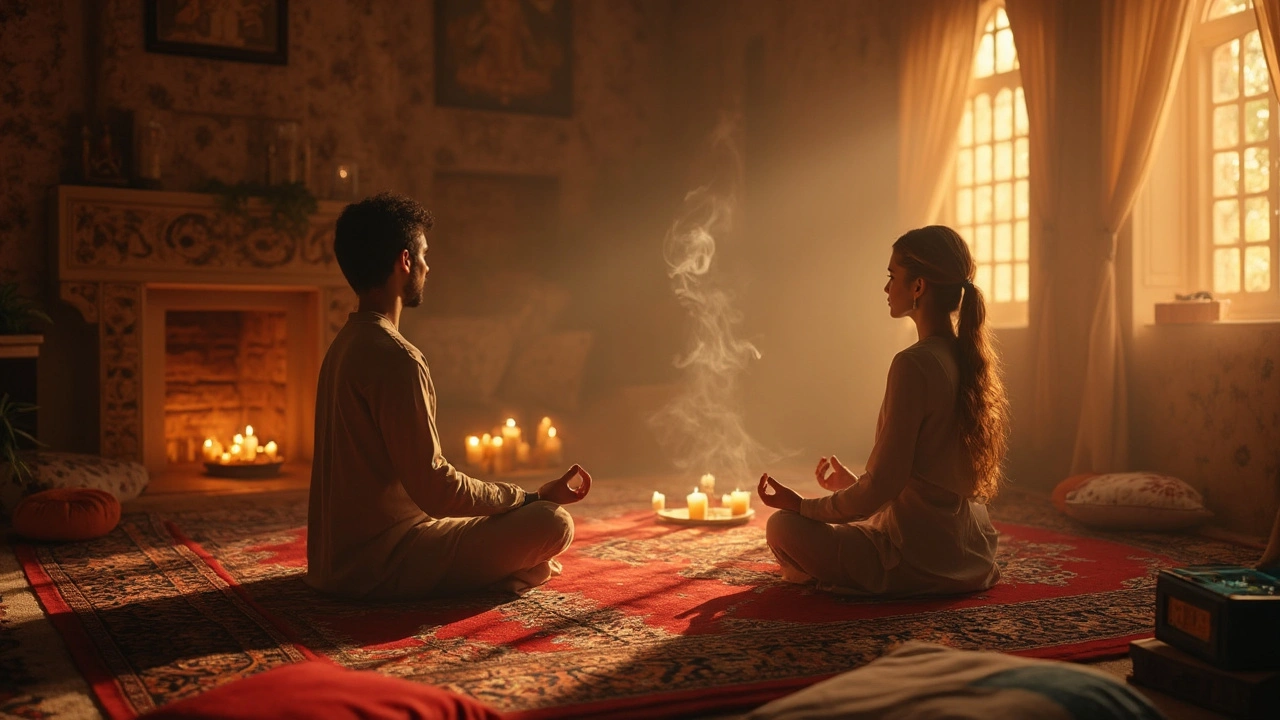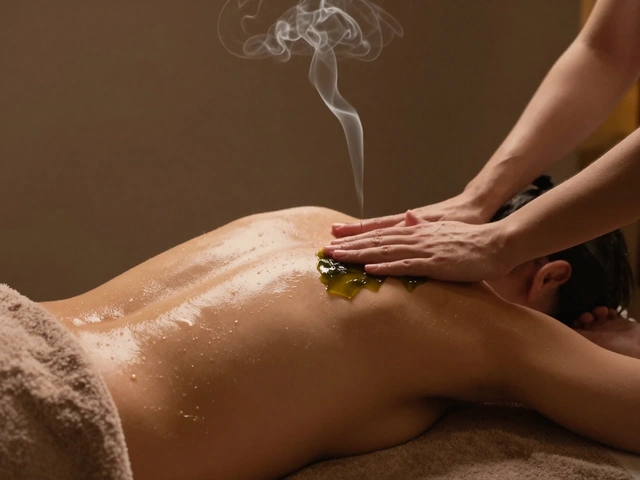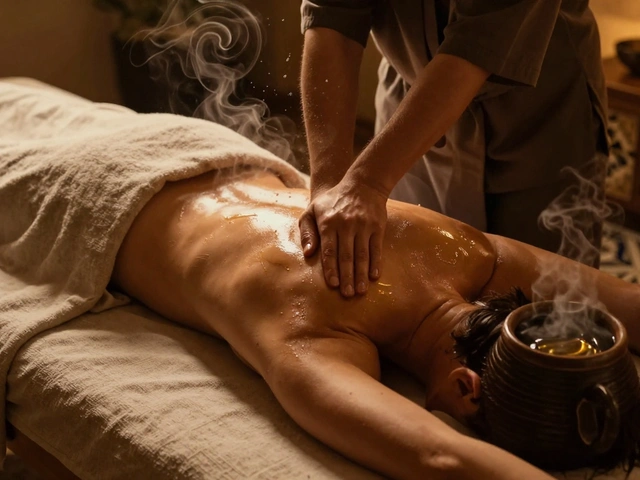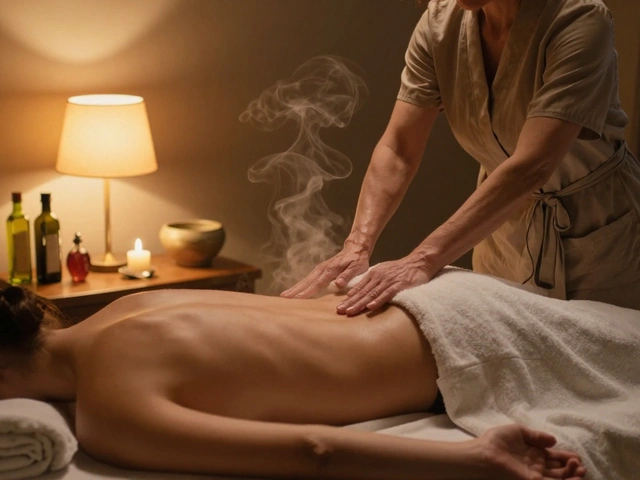Ever notice how music can totally change your mood? That’s exactly why it plays such a big role in tantric massage. The right soundtrack doesn’t just fill the background—it steers the whole experience, from the first deep breath to the final moments of blissed-out calm.
Picking music for a tantric massage isn’t just about what sounds nice. Certain rhythms can help slow your breathing, boost your focus on the present, and make it easier to drop your daily worries. Soft gongs, gentle chanting, or even simple nature sounds all work by telling your brain, “Hey, it’s time to let go.”
If you’re planning a session, don’t just settle for any playlist. Take a minute to check if the music feels soothing or distracting. Sometimes a simple rainstorm track beats a complicated melody. Your body (and mind) will thank you for it.
- Key Points and Quick Facts
- Why Music Matters in Tantric Massage
- Types of Sounds and Music Used
- Setting Up the Perfect Atmosphere
- Tips for Your Next Session
Key Points and Quick Facts
Music and sound do a lot more than drown out street noise during a tantric massage. Here are the key things you need to know:
- Studies show slow, rhythmic music can lower stress and make it easier for your body to relax. Most tantric practitioners use music between 60-80 beats per minute—think chill, not party vibes.
- Soft gongs, Tibetan singing bowls, and calming nature sounds are favorites in many studios. Each helps trigger physical relaxation and can even slow your heart rate.
- Music isn't just for comfort. The right sounds help both your mind and your muscles let go, making every touch feel deeper.
- Not every playlist fits. Lyrics can be distracting, especially if you find yourself singing along in your head. Most therapists stick to instrumental, ambient tracks.
- Clients who listen to music tailored for relaxation before and during a session often report a stronger sense of connection and heightened emotional release at the end.
- If you have a favorite relaxing song or sound, many therapists encourage you to share it ahead of time. Custom playlists can make your experience even more personal.
It all comes down to creating the best vibe. Whether you're new or experienced, these quick facts can help you use sound to level up your next massage session.
Why Music Matters in Tantric Massage
When you slip into a tantric massage session, what you hear shapes your whole experience. Music isn’t just decoration here—it’s a tool that guides your body and mind. For starters, studies show that slow, steady rhythms can lower your heart rate and drop stress levels fast. One published survey found that spa clients rated relaxation up to 30% higher when background music matched the mood of the session, compared to when there was silence or random tunes playing.
Here’s why music makes such a difference:
- Tantric massage relies on letting go of tension. The right sounds help you do that by signaling your brain that it’s safe to relax.
- Music helps with focus. When you listen to a calming track, you’re less distracted by passing thoughts or outside noises.
- Sound connects people. Shared music can build a sense of intimacy between you and the massage therapist, making it easier to trust and open up to the experience.
- Certain frequencies, like Tibetan singing bowls or low drum beats, are believed to enhance the body’s natural energy flow, which is central to tantric practices.
Ever notice you breathe slower when soft music plays? That’s not just your imagination. According to a 2023 wellness report, 80% of massage therapists said their clients fell into deeper relaxation faster when gentle ambient sound was part of the session.
| Music Type | Effect During Massage |
|---|---|
| Slow rhythmic beats | Steady breathing, lowers anxiety |
| Nature sounds (rain, waves) | Makes you feel safe, shields outside noise |
| Chanting or mantras | Deepens presence, encourages mindfulness |
| Tibetan bowls/gongs | Supports energy flow, eases muscle tension |
So, if your goal is to feel more present, let go, and connect with your senses, don’t overlook what’s playing in the background. Your playlist might just become your new secret weapon for better sessions.

Types of Sounds and Music Used
Not all music works the same way during a tantric massage. The sounds set the pace and mood, and sometimes even help guide breathing and touch. Here’s a rundown of what you’re likely to hear in a session, plus why it matters.
- Nature sounds: Think ocean waves, birds singing, soft rain, or forest background. These help people relax fast since our brains link them to calm, safe spaces. It’s like bringing the outdoors inside.
- Low-frequency tones: Instruments like gongs, Tibetan singing bowls, or didgeridoos make deep, rumbling sounds. These can actually slow down your heart rate and steady your breathing, making it easier to get “in the zone.”
- Soft chanting and mantras: Gentle voices or chants looped in the background can help with focus. Some chants repeat ancient words that are supposed to boost relaxation and a sense of connection.
- Ambient and instrumental music: Soft guitars, piano, and synth pads (those drone-like sounds) work well if you’re not a fan of singing or lyrics. They’re simple and just melt into the background.
- Silence with subtle sound: In a lot of 2023 sessions, therapists started using setups that mix quiet moments with tiny bursts of sound—think a bell or a soft drum between longer spaces of silence. This lets both people really notice every touch and breath.
Some therapists even take requests or customize playlists based on your mood. Don’t be shy to ask about this before your session starts—it can make a real difference.
| Type of Sound | Effect on Body and Mind | Example |
|---|---|---|
| Nature (rain, ocean, birds) | Reduces anxiety, improves mood | Rainfall playlist on Spotify |
| Low-frequency tones | Lowers heart rate, calms breathing | Tibetan singing bowls |
| Chanting/mantras | Helps focus, deepens relaxation | Om chant, Sanskrit mantras |
| Ambient/instrumental | Creates peaceful mood, blends in | Soft guitar, calming synths |
Pick music that matches how you want to feel. Nature sounds for peacefulness, deep tones for grounding, or chanting for deeper focus. If you like mixing things up, try a blend of these—experiment to find your sweet spot.
Setting Up the Perfect Atmosphere
When it comes to tantric massage, there’s no such thing as “just background music.” Getting the vibe right is all about details, and your senses pick up on everything. Setting up a room with the best sound and feel is way easier than it sounds, but you have to be intentional about it.
First, think about what you want: relaxation, connection, or energy rebalancing? Your tantric massage should match up with your goals, and the atmosphere sets the stage.
- Pick the Right Tracks: Sound quality matters more than you’d think. Go for tracks with smooth transitions–think ambient music, soft chanting, Tibetan singing bowls, or even a simple playlist of rain or ocean waves. High-pitched or random songs can mess with your focus.
- Control the Volume: Keep it low. If you have to shout over the music, it’s too loud. Studies show that sounds under 60 decibels (that’s about the level of normal conversation) help you unwind best.
- Speaker Placement: Place speakers so that the sound floods the room, not just one corner. Audio that fills the space gently works better than blasting from a laptop in the corner.
- Add Nature Sounds: Things like water trickles or forest birds can seriously boost relaxation. A 2021 study found that people who listened to natural sounds during massage sessions reported 18% lower stress levels than those with silence or random music playing.
- Dim the Lights: While not exactly sound, low light helps put you in the zone, making the music feel even more calming.
Here’s a quick cheat sheet for a typical setup:
| Atmosphere Element | Best Practice |
|---|---|
| Music Type | Slow tempo, instrumental, or gentle nature tracks |
| Volume | Below 60 decibels |
| Speaker Placement | Evenly spaced around the room |
| Room Lighting | Dimmed, soft bulbs or candles |
| Scent | Mild incense or essential oils, not overpowering |
If you’re unsure where to start, apps and playlists made for meditation or yoga are perfect. And if you’re working with a practitioner, tell them what you like or can’t stand–this is your time to relax, after all.

Tips for Your Next Session
Getting ready for a tantric massage? A little planning goes a long way. Here’s what actually sets the good sessions apart from the forgettable ones.
- Talk about music upfront. Let your practitioner know if you have any music preferences or triggers—maybe flutes soothe you, but chimes drive you nuts. Most therapists are happy to adjust the playlist for a better experience.
- Choose simpler tracks. Complex lyrics or loud beats can distract from relaxation. Go for instrumentals, singing bowls, soft ambient tunes, or nature sounds. A 2021 study in the Journal of Bodywork & Movement Therapies found that slow, repetitive music helped clients calm down much faster compared to regular radio tracks.
- Control the volume. Ask the therapist to tweak the sound if it’s too loud or too soft. You should feel like the music is wrapping around you, not blaring in your ear.
- Set your intention. Tune in to the sounds and use them as a mental anchor if your mind starts to wander. You’re more likely to stay present and get the full benefit from your session.
- Bring your own playlist. If you have a favorite relaxation album or playlist, bring it along. Some therapists even encourage this!
If you’re curious which sounds work best, check out this quick comparison:
| Type of Sound | Common Uses | Best For |
|---|---|---|
| Tibetan Singing Bowls | Deeper relaxation, balancing energy | Meditation, calming anxious minds |
| Nature Sounds | Background calming, masking outside noise | People sensitive to music or seeking simplicity |
| Soft Instrumentals | Steady focus, smooth flow | General stress relief, staying present |
One last thing—don’t be afraid to give feedback at any point in the session. Therapists expect it and want you to get the best out of your massage. Your comfort and relaxation matter most, so speak up!





